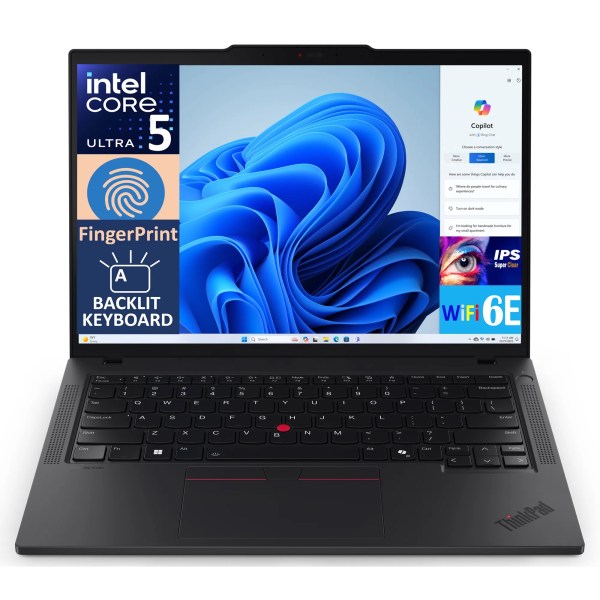Apple has the MacBook, a svelte nugget of aluminum that’s become an iconic laptop of the 21st century. Windows has…a bunch of imitators, jostling for the top position in the much wider field of Windows laptops. Most of them imitate the MacBook’s form, and several do an impressive job.
The ThinkPad, a family of (mostly) Windows laptops that just celebrated its 33rd birthday? They do laptops their own way. The internals are cutting edge, updated constantly to keep pace with the ever-increasing demands of modern computing, but the aesthetics and ergonomics are preserved year after year, like a classic sports car you can buy fresh out of the showroom.
classic on the outside, modern on the inside
Boxy, quirky, downright old-fashioned. The ThinkPad has had only minor revisions cosmetically over the past couple of decades. Released by IBM in 1992, the ThinkPad rose to iconic status slowly. But by the 2010s, with its decidedly old-fashioned refusal to chase trends, it was a symbol of defiance against Apple’s dominance in setting the design language for every wannabe, copycat laptop manufacturer.
The T-Series shown above strikes the balance of a powerful machine at a middle-of-the-road price point. If I had to draw the most direct line between the ThinkPad of the 2000s to any one of the ThinkPad sub-families, I’d draw it to the T-Series.
The E-Series featured below debuted in 2010 as a more value-oriented ThinkPad.
Lenovo bought IBM’s PC business, including the ThinkPad, in 2005. Everybody, including me, was worried that Lenovo would mess with a good thing and try to dress up the ThinkPad to keep pace with newer design trends.
In time, Lenovo released the ThinkBook, a swipe at the more modern trend of laptop design language popularized by the Apple MacBook. And it’s a fine machine. It was a smart decision to keep it as a separate lineup from the ThinkPad, rather than try to dress up the ThinkPad in new clothes, like an octogenarian trying to pass as a college student.

All the iconic ThinkPad design features are there. Take the red trackpoint planted in the middle of the keyboard. If you weren’t using laptops 20 years ago, you’d be forgiven for not knowing that this was a standard feature on laptops, an alternative way to control the cursor when you didn’t want to use the trackpad itself.
And then there are the two physical buttons—left-click and right-click—that remain at the top of the trackpad, two more ancient features kept in production by the ThinkPad.
ThinkPads are also built like tanks, widely known for their durability. Thank the frames for that, made of materials such as carbon fiber and magnesium alloy. The upper-end sub-families, such as the T-Series, have drain holes in the keyboards to keep spills from pooling up inside the case.
It’s enough to make the nostalgic weepy-eyed, and attractive enough for somebody who wants something different, a little retro in appearance but also modern in performance. Apple may have the MacBook, but the ThinkPad is a wonderfully obstinate finger in the eye of 21st-century laptop design.
More
From VICE
-

Screenshot: The Gang -

@AstroAnnimal/X -

By Nextvoyage on Pexels



